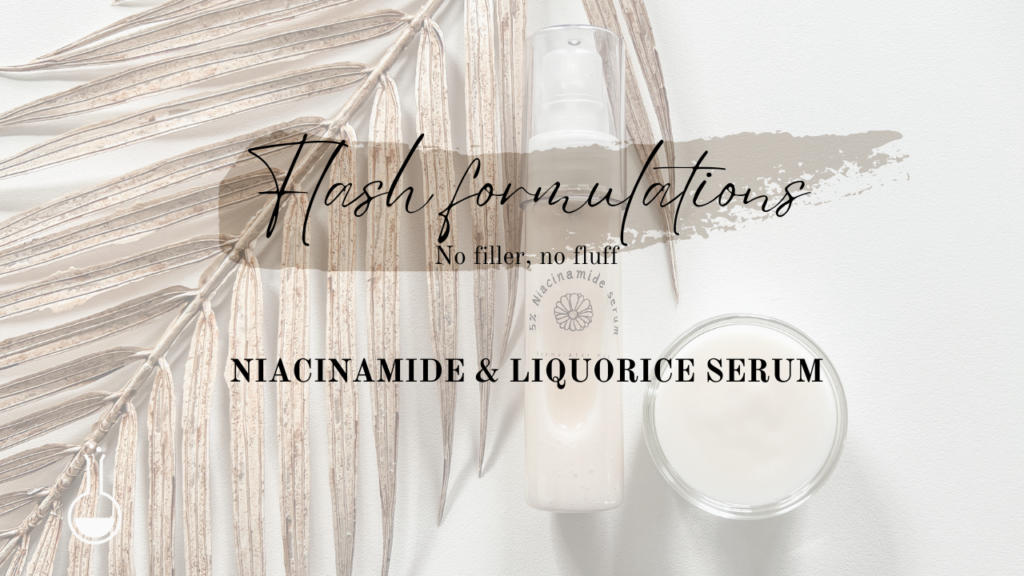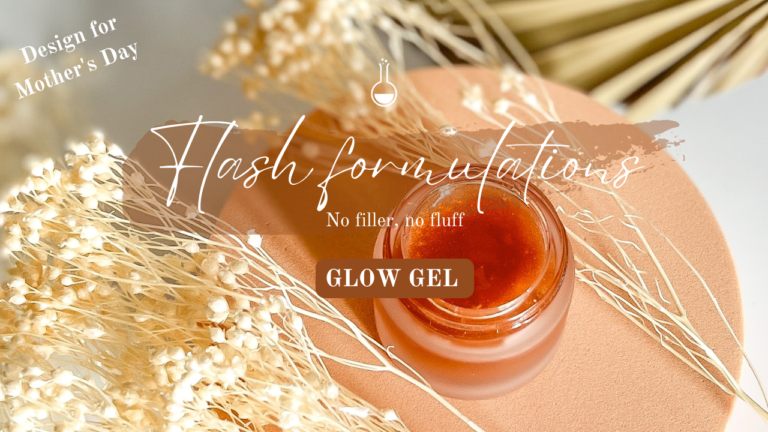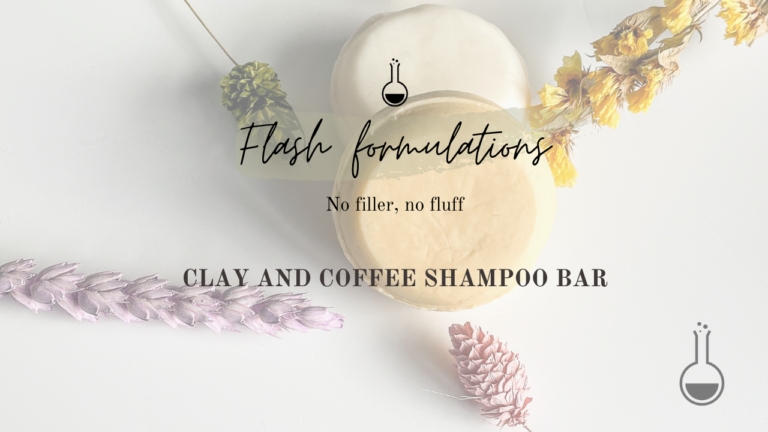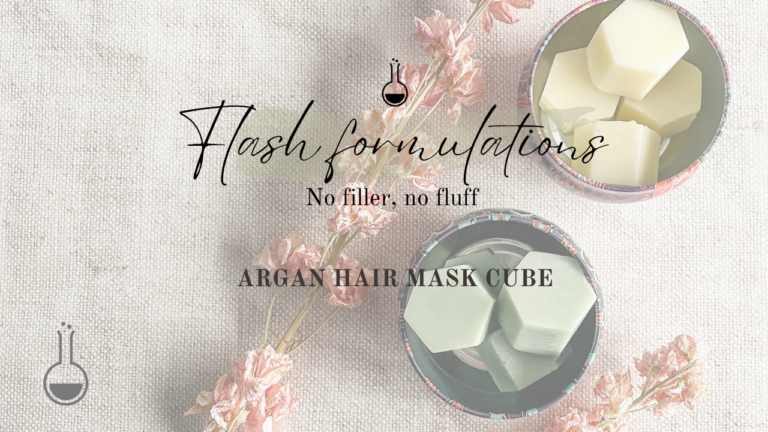FORMULATE A NIACINAMIDE AND LIQUORICE SERUM

Table of Contents
ABOUT THE NIACINAMIDE AND LIQUORICE FORMULA
Do you have textured skin or enlarged pores? You need niacinamide, so let’s make a serum with it.
I am using Olivem 1000 to make this gel-cream-like serum. Olivem 1000 has a bad reputation for creating emulsions with a soaping effect ( the white streaks you get when you try to rub the emulsion into your skin). However, it is often connected to your ingredient and their percentage. Olivem 1000 is excellent for creating one-pot emulsions, which means we heat both water and oil phases together. It makes life easier, don’t you think? We will still heat the ingredients and use a homogeniser, but we will do this all in one beaker.
The hero ingredient of this serum is niacinamide. Niacinamide is a water-soluble form of Vitamin B3 that works with the natural substances in your skin to help visibly improve the appearance of enlarged pores, uneven skin tone, fine lines, and dullness. It’s a powerhouse ingredient that enhances the skin’s barrier function, maintains hydration, and protects against environmental damage. Niacinamide has many benefits and can be a game-changer for anyone struggling with textured skin. Textured skin can be connected to oily skin and sebum production, anti-inflammatory skin conditions such as rosacea and acne, and even the natural ageing process. It’s highly compatible with other active ingredients, making it easy to integrate into your formulations.
I am using 5% niacinamide in this formula, as this concentration has been shown to be effective without causing irritation. You will also find serums that contain even 10%, but an increased amount will also increase the likelihood of reaction so I only recommend it if your skin is used to products with high amount of niacinamide. Like most skincare ingredients, niacinamide works best when used consistently. You should start seeing skin texture improvements within a few weeks of regular use.
In addition, I am also using a liquorice root extract called Dipotassium Glycyrrhizate. Dipotassium Glycyrrhizate is a salt derived from Glycyrrhizic acid, which is extracted from the root of the liquorice plant (Glycyrrhiza glabra). While Dipotassium Glycyrrhizate stands out for its strong soothing properties, it also has sebum-regulating properties, so it works very well with niacinamide.
HOW TO USE
Use it in the morning and/or in the evening. Apply it on cleansed skin and follow it with a moisturiser, sunscreen, etc.
POSSIBLE SOURCES
THE FORMULA
| Phases | Ingredient | Function | %w/w |
|---|---|---|---|
| A | Water | Solvent | To 100% |
| A | Propanediol | Humectant | 5.0 |
| A | Solagum AX | Thickener | 1.50 |
| A | Olivem 1000 | Non-ionic surfactant | 3.0 |
| A | Coco-Caprylate/Caprate | Emollient | 3.0 |
| B | Niacinamide | Vitamin, active | 5.0 |
| B | Dipotassium Glycyrrhizate | Added extra | 0.30 |
| B | Tocopherol | Antioxidant | 0.20 |
| B | Essential oil of your choice | Fragrance | 0.50 |
| C | Geogard ECT | Preservative | 1.0 |
| D | pH adjuster | pH adjuster | qs |
Method:
- Weigh the water in a beaker.
- In another beaker, mix the propanediol and Solagum AX to create a slurry. Add this slurry to the water.
- Add in the Olivem 1000 and Coco-caprylate.
- Heat Phase A to 75°C. ( To clarify: gum, water, emulsifier, and oil are in one beaker).
- Remove from the heat and homogenise until smooth. Move on to stirring by hand.
- Under 40°C, add Phase B, one by one and stir until homogenous.
- Add Phase C and adjust pH to be 5.8-6.3 (Phase D).
Wait 24 hours before evaluating.
*I used a 5% Neroli essential oil blend as my essential oil.



